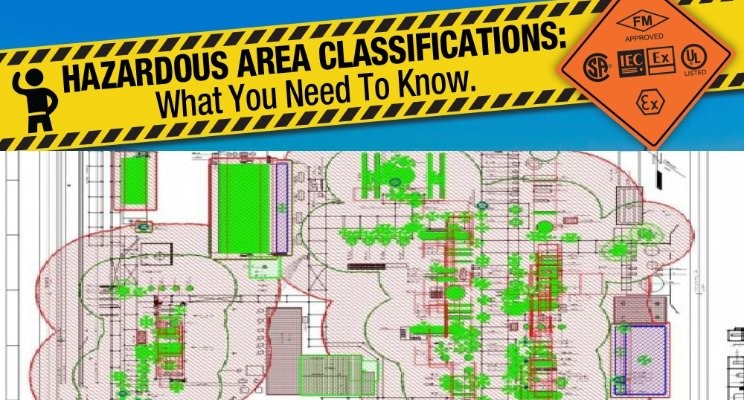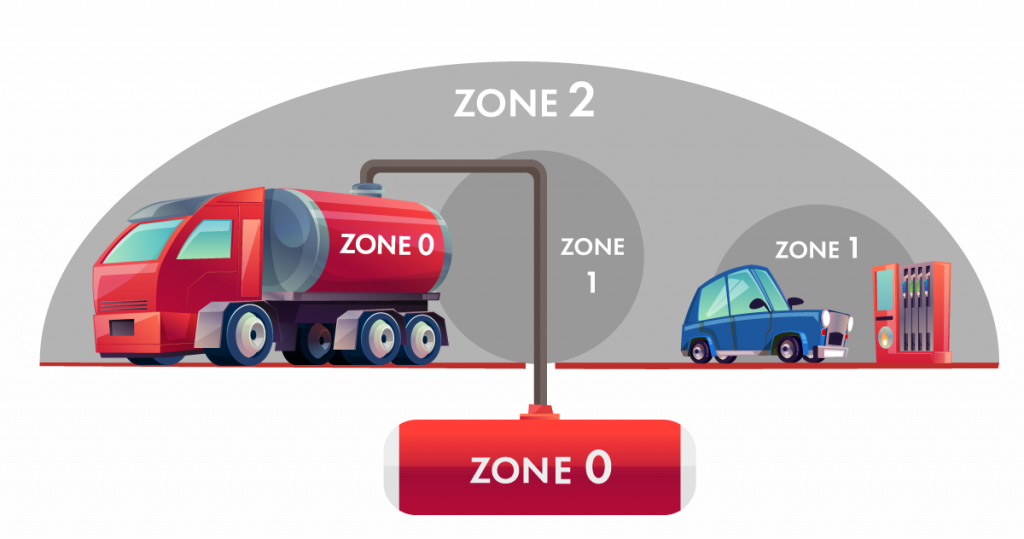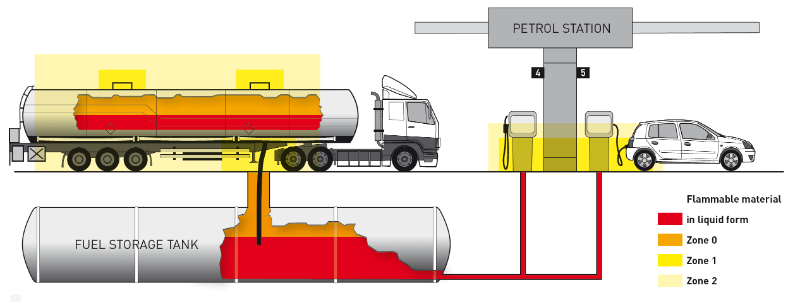Fire and Explosion Risk Assessment
In the industrial plant where flammable liquids, gases and vapors, combustible dust or fibers and flying’s are handled, processed, or otherwise generated, there can be a risk of fire or explosion. In order to have a fire or an explosion, the fire triangle or explosion pentagon must be met. There must be fuel present, the fuel must be mixed with an oxidant in the appropriate ratio, and an ignition source of enough intensity must be present.
Hazardous area classification (HAC) identifies the areas in a plant where an explosive or flammable atmosphere may be present under foreseeable circumstances.
The procedure is used to identify the extent and duration that flammable atmospheres can be present in normal and conceivable abnormal conditions. The aim is to identify whether flammable atmospheres can form in a process equipment and process operation when the plant is in use and to identify whether the flammable atmosphere can be present:
- Continuously
- During normal operation of the process, or
- Only during abnormal or mal-operation conditions and then only for a short time.
This assessment must cover the release of flammable materials, the nature of the material, ventilation, and frequency of release and the potential duration of such an event.
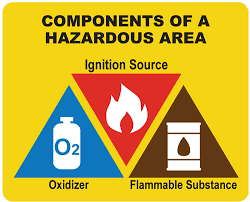
Historical Perspective
Origins of hazardous area classification can be traced back to coal mining during the industrial revolution. Methane (firedamp) that was trapped in the coal was released during the process of mining. Methane, being a flammable gas, presented a major fire hazard as it was easily ignited by the flaming torches carried by the miners, and this sometimes led to the ignition of coal dust causing major accidents.
As a safety precaution a person wrapped in a wet blanket and carrying a long pole with a flaming ember at the far end entered the mine before the start of a shift. The intent was to ignite a cloud of methane if it was present, and the "safety officer" would (hopefully) be saved by the wet blanket. However, being saved by the wet blanket depended on the volume of methane. The rationale was that this approach would save many other lives.
Safety improved with inventions such as the safety lamp invented by Humphry Davy around 1815. This was followed by much safer devices such as battery-operated lamps.
In the United States, the concept of hazardous areas was first addressed in the 1923 Edition of the National Electric Code (NEC). In current editions, Chapter 5 (Special Occupancies) addresses hazardous areas.
Originally HAC was used to enable process companies to make the correct choice of electrical equipment to prevent electrical ignition of flammable atmospheres. Now HAC is being applied in wider risk assessment work and to counter a range of ignition sources, such as electrostatic sparks, and flammable substances, such as solvent vapors, gases or mists and dust clouds. For this reason, HAC is needed not only in chemical plants but in a variety of other industries including food, power, wood, etc.
At MLC, our hazardous area classification consulting services are designed as per the customer needs to follow IEC, IS/IEC, NFPA and other standards. Our team members are knowledgeable about classification, electrical equipment and wiring, applicable standards and codes, chemicals used, plant safety, ventilation assessment, and more. When you work with us, we ensure safe and consistent classification via the application of sound engineering judgment and the careful evaluation of all data in accordance with established techniques.
Hazardous Area/ Location – Our Consulting Services
At Stonehouse, we have process safety consultants that specialize in helping clients with all aspects of Hazardous Areas and equipment contained therein:
- We Classify Hazardous Areas by establishing the likelihood, extent and duration of flammable atmospheres; we interpret the flammability/ combustibility characteristics of hazardous materials present; all our work utilizes the latest guidelines and the relevant Codes and Standards.
- We advise on practical solutions as to how flammable atmospheres can be eliminated and/or controlled.
- We advise on the selection, and installation of electrical equipment and wiring that is suitable for use in the classified hazardous areas.
- We audit facilities to check on equipment installed and its suitability for safe use in its classified location.
In performing our work, we always find it’s worth making sure that the facility personnel is deeply involved in all steps of the process, so their knowledge is both utilized and expanded – and specific concerns are addressed.
Why Should You Work with MLC Process Safety for Electrical Area Classification?
At MLC Process Safety, our electrical area classification consulting services are designed to preserve the safety of your assets, equipment, and people. Our team members are knowledgeable about classification, electrical equipment and wiring, applicable standards and codes, fire detection systems, chemicals used, plant safety, HVAC engineering, and more. When you work with us, we ensure safe and consistent classification via the application of sound engineering judgment and the careful evaluation of all data in accordance with established techniques. Our experience includes classifying plant battery systems, fuel oil systems, and fuel gas systems.
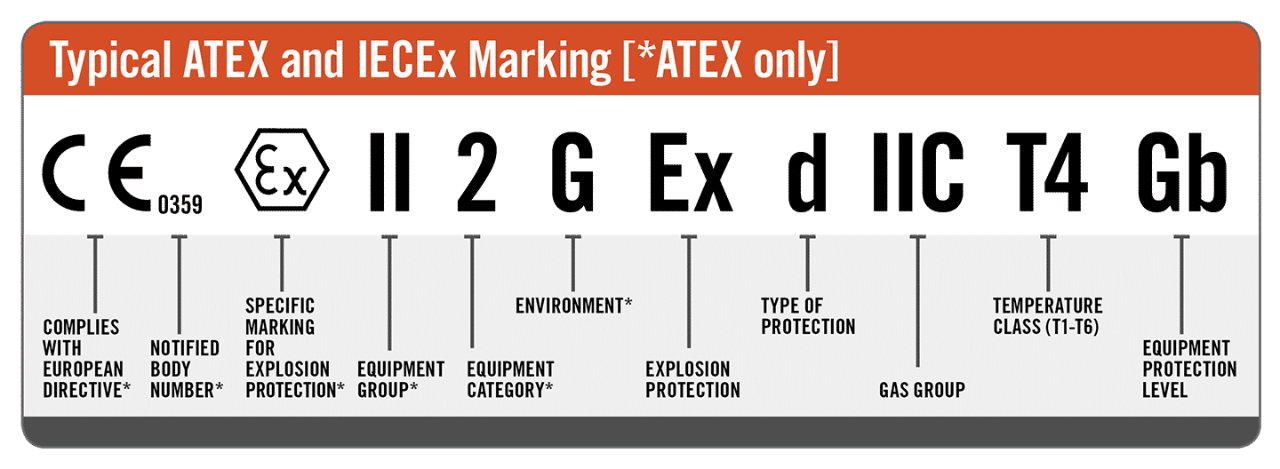
Equipment for Hazardous Areas: -
Equipment such as circuit breakers, switches, contactors etc., which can cause arcing and sparking shall be enclosed in explosion proof housings.
For Class I locations, the enclosure should be robust enough to contain the arc/spark or explosion within the enclosure itself and should be designed such that the hot gas produced inside the enclosure is adequately cooled as it escapes the enclosure. The surface temperature of the enclosure shall not increase beyond the specified Temperature Class rating.
For Class II locations, the enclosure shall keep dust out of the interior and operate at a safe surface temperature. The presence of dust inside the enclosure is unlikely and hence the probability of an internal explosion is low. These enclosures may have thinner walls in comparison with enclosures rated for Class I installation. The construction of these enclosures is known as dust-ignition proof.
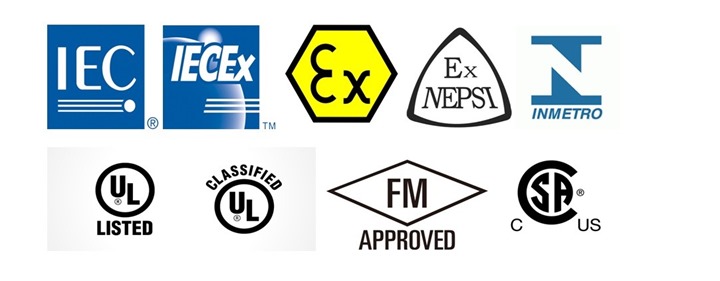
Purged and Pressurized Systems: -
In case of purged systems, the enclosure is supplied with a protective gas such as dry instrument air or nitrogen at a suitable pressure and flow rate and this will reduce the concentration of any flammable gas or vapor that may be initially present to a level that it will not support an explosion. The enclosure is purged before starting the equipment.
In case of pressurized systems, the enclosure is supplied with a protective gas such as dry instrument air or nitrogen to maintain a pressure slightly higher than atmospheric pressure, and this will prevent the entrance of a flammable gas or vapor or a combustible dust inside the enclosure.
NFPA 496 provides information on the methods for purging and pressurizing electrical equipment. Refer to Article 100 of the NEC for definitions of purged and pressurized systems.
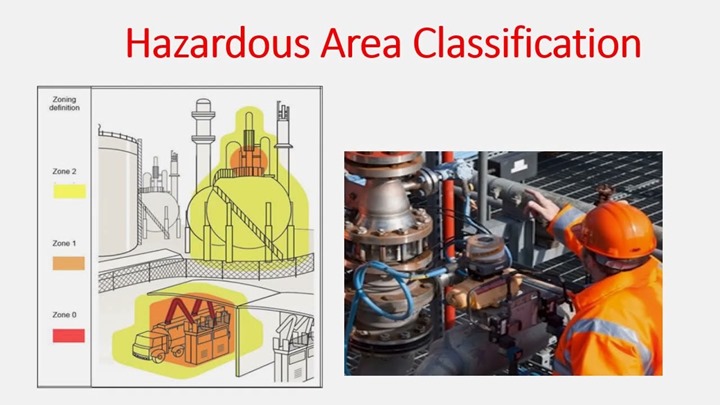
Intrinsically Safe Systems: -
Intrinsically safe systems are typically used in instrumentation and control applications. Intrinsically safe systems do not release electrical or thermal energy to cause ignition. Intrinsically safe systems typically use Zenner barriers or Galvanic isolation.
ANSI/UL 913 provides information on the design, testing and evaluation of intrinsically safe systems.
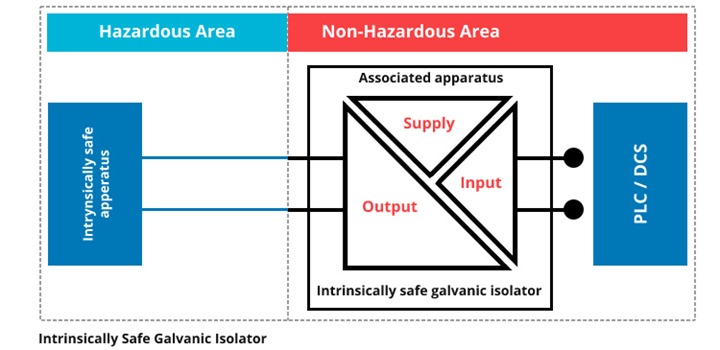
The IEC system follows the system as defined in various parts of IEC 60079. The most commonly used ones are as noted below:
- Ex-d (Flame Proof Enclosure)
- Ex-e (Increased Safety)
- Ex-n (Non-Incendive)
- Ex-p (Pressurized)
- Ex-i (Intrinsically Safe)
- Ex-m (Molded Encapsulation)
Best Practices: -
Some best practices for hazardous area classification are as noted below:
- Follow established engineering practices such as API, NEC, IEC and PIP etc.
- Ensure that hazardous area requirements are established before purchasing equipment.
- Ensure that hazardous area classification layouts reflect the current status of the facility.
- Review and update layouts before each modification.
- Ensure that the addition of new equipment does not impact existing equipment / facility and if so, take corrective action.
- Ensure that the area classification "cloud" (the 3D space where fire or explosion hazards may exist) does not encroach roads, walkways, occupied buildings, welding / fabrication yards etc.
- Perform a thorough review when introducing new sources of release in an existing facility.
- Ensure equipment installed in the classified area is rated for service conditions.
- Follow the manufacturer’s installation manual, applicable codes and standards.
- Maintain proper documentation.
MLC Hazardous Area Classification services.
As one of the practicing Hazardous Area Classification Consultants in India we facilitate proper selection and installation of electrical equipment to be used safely in that environment without any commercial bias.
Hazardous Area Classification is the process of identifying and categorizing zones where flammable gases, vapors, liquids, or combustible dusts are present. The purpose is to determine appropriate safety measures for each area and equipment needed to prevent potential fire or explosions to ensure safe operations.
Classification of Hazardous Zones are done based on the applicable guides and standards and properties of the flammable materials that may be present.
Hazardous Areas Classification or HAC was primarily used for choosing electrical equipment to prevent ignition in hazardous atmospheres. Now HAC is being applied in risk assessments to areas that can contain flammable vapors, gases, combustible dust, or fibers.
The classification includes the zoning of the areas handling –
- Flammable chemicals according to IS 5572 and IEC 60079-10-1 and
- Dusts according to IEC 60079-10 – 2 Guideline- Electrical Apparatus for Explosive Gas Atmosphere or relevant NFPA standards
- NFPA 497 – Recommended Practice for the Classification of Flammable Liquids, Gases, or Vapors and of Hazardous (Classified) Locations for Electrical Installations in Chemical Process Areas
- NFPA 70 – National Electric Code
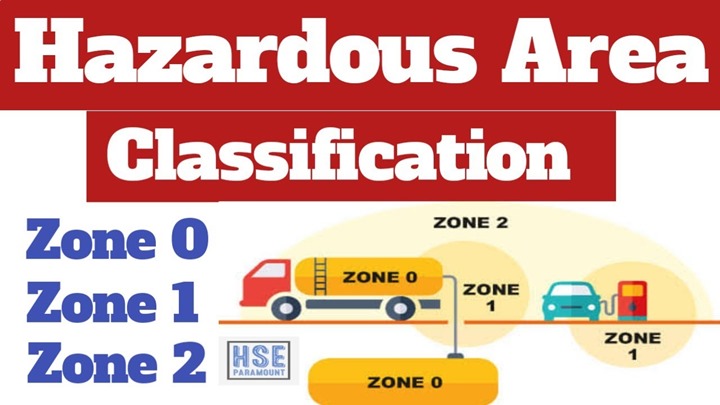
The uniqueness of MLC
- A unique end-to-end solution customized to your existing system and need
- In line with statutory requirements, national and international standards, guidelines and industry best practices
- Practical and competent consulting team comprising of industry experienced Hazardous Area Classification Consultants in India
How do we do them?
Our Hazardous Area Classification (HAC) studies help you to plan, identify and manage your explosive atmosphere related risks. As a practicing Hazardous Area Classification Consultants in India we acquired a deep understanding of electrical safety, process hazard analysis, standards & legal requirements, process steps and industry insights.
We ensure that the results provide you with information that can help you to manage risks for your people.
The major steps for a HAC study are:
Pre-activities: -
Understanding the scope of work and purpose of HAC based on the appropriate risk levels related to your industry sector, processes and people is the stepping stone. Selecting a small multidisciplinary HAC team from the organization to support the external experts also play an important role.
Collect Inputs: -
Collection of existing information about workplace hazards through the physical tour, the study of the plant operations, previous data, discussions with process owners Identification and compilation of flammability data Building and equipment layout
Identify Hazards: -
Based on action item 2, identify hazards associated with normal or routine, non-routine and emergency situations: Identification of potential release sources Estimation of the release duration Present system of ventilation and its effectiveness Determination of possible ignition mixture(s)
Zone Rating & Documentation: -
Based on the above-mentioned inputs, the next step is rating and classification of zones as per the applicable Hazardous Area Classification Guide and standards considering country legal requirements.
Hazardous Area Classification Zone 0 1 & 2
The most common values used are :
Zone 0: Explosive atmosphere for > 1000 h/yr.
Zone 1: Explosive atmosphere for > 10, but < 1000 h/yr.
Zone 2: Explosive atmosphere for < 10 h/yr, but still significant enough to require controls over ignition sources.

Evaluation & Recommendation of Electrical Equipment: -
Provide recommendations for selection & suitability of electrical equipment and apparatus within the classified zones.

